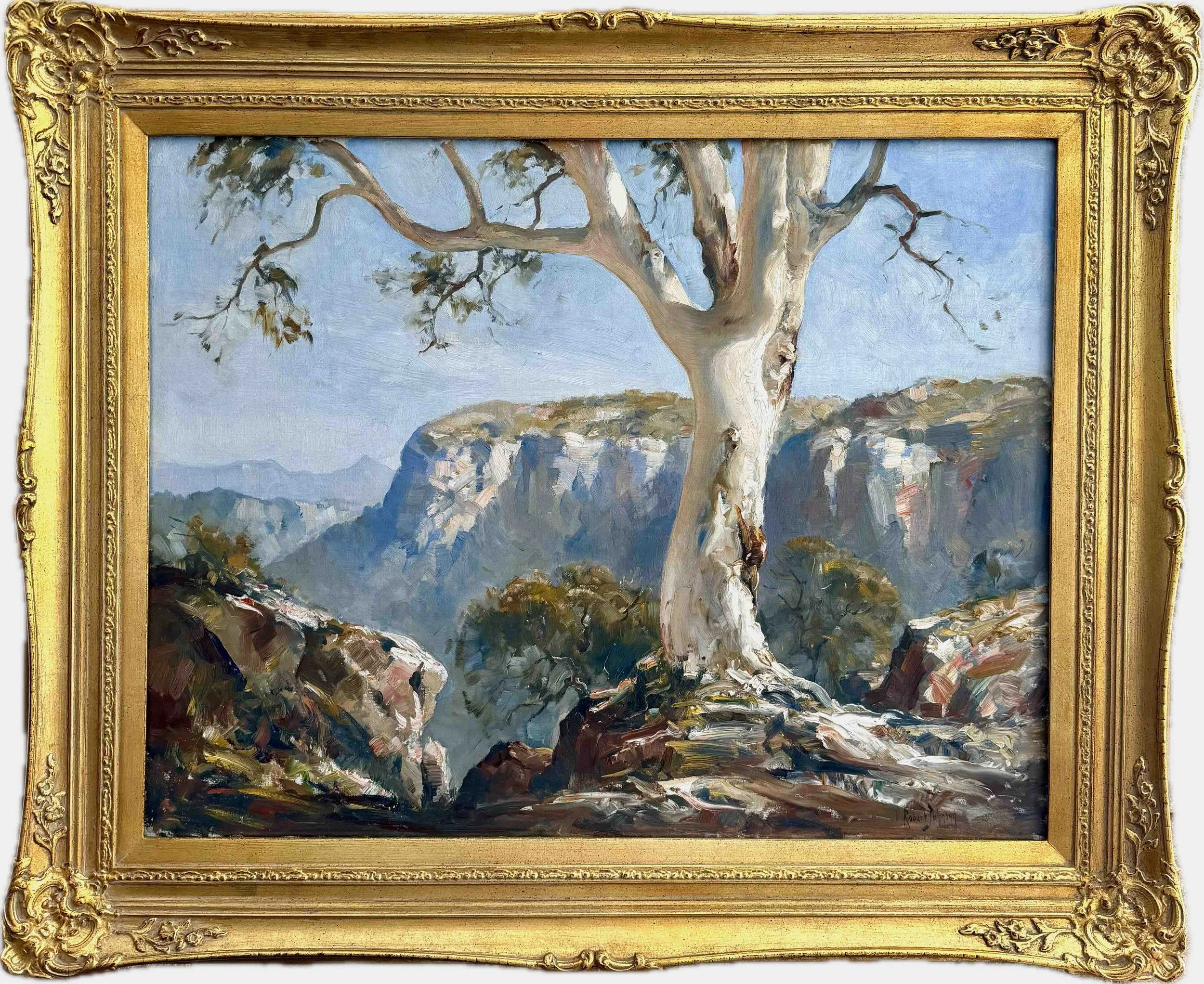Rupert Bunny | South Of France c1920 | SOLD
South of France c 1920
Oil on paper
15 x 23 cm
Label verso -Authentication by Moreton Galleries Brisbane 1955
Other sheets, similar in size and composition evidently completed En Plein Air, reside in the Art Gallery of NSW.
SOLD
Rupert Bunny 1864- 1947
BIO
Rupert Charles Wulsten Bunny (1864-1947), artist, was born on 29 September 1864 at St Kilda, Melbourne, third son of Brice Frederick Bunny, barrister, and his wife Marie Hedwig Dorothea, née Wulsten. Educated at the Alma Road Grammar School, St Kilda, The Hutchins School, Hobart, and in Germany and Switzerland, in 1881 he enrolled at the University of Melbourne to study civil engineering. Abandoning his studies in the hope of becoming an actor, but frustrated by family opposition, he eventually joined the National Gallery schools under O. R. Campbell and G. F. Folingsby; his fellow students included Frederick McCubbin, E. Phillips Fox and Louis Abrahams. In 1884 Bunny went to London and enrolled at P. H. Calderon's art school in St John's Wood. Two years later he left for Paris to study under Jean-Paul Laurens.
Bunny exhibited at the Salon de la Société des Artistes Français (Old Salon) from 1888, becoming the first Australian painter to receive a mention honorable for his painting 'The Tritons'. He also began exhibiting with British societies and galleries including the Royal Academy, London, the Royal Society of British Artists, the Institute of Painters in Oil-Colours, the Fine Art Society, and the New Gallery, Grosvenor, and Grafton galleries. His participation in the Carnegie Institute's 'Pittsburgh Internationals' was to continue for almost thirty years; he was awarded a bronze medal at the Paris Exhibition of 1900, and was represented in the Bendigo Victorian Gold Jubilee Exhibition of 1901-02. In 1901 he left the Paris Old Salon for the New (Société Nationale des Beaux-Arts). This coincided with a change in his work from large, idealized subject compositions drawn from the Bible and especially classical mythology, painted in a neo-classical style touched with Pre-Raphaelitism, to paintings of women, landscapes, and portraiture. His interest in music is reflected in his portraits of musicians, especially of fellow Australians Nellie Melba, Percy Grainger and Ada Crossley.
In 1902 in Paris Bunny married Jeanne Heloise Morel, a former fellow student and favourite model whose portrait he painted often. His paintings now became more French, both in subject and style. One-man exhibitions were held at the Galérie Silberberg and the Galérie Graves, Paris. He produced some of his most successful works during this first decade of the new century. 'Après le Bain' was purchased for the Jeu de Paume, the first of many to be bought by the French government, followed by 'Endormies' (National Gallery of Victoria), 'Summer Time', his major compositional achievement, and 'A Summer Morning' (both in the Art Gallery of New South Wales). At the height of his powers and with an enviable reputation he visited Australia in 1911 for successful exhibitions in Melbourne and Sydney. His return to Paris in 1912 marked a period of crisis and uncertainty with World War I shattering an age of elegance. His work in the American Hospital in Paris also affected him deeply.
Bunny again turned to the classics for inspiration, producing a brilliant series of mythological decorations that are among his finest works. These new decorative compositions reached their fullest expression in the 1920s with stylistic influences ranging from classical Greek art, through Puvis de Chavannes, Art Nouveau and Fauvism, to Diaghilev's Ballets Russes. Bunny also returned to painting landscapes, especially lyrical views of the south of France.
In the 1920s he held a number of exhibitions in Melbourne and Sydney as well as in Paris, before hard economic times and the death of his wife in 1933 resulted in his finally returning to Melbourne to live. He exhibited with the Victorian Artists' Society, various contemporary groups, and was artist vice-president and inaugural member of the Contemporary Art Society, established in 1939. The same year he began exhibiting annually at the Macquarie Galleries, Sydney.
Bunny devoted increasing time to music in his last years and composed several ballets. In 1946 a major retrospective exhibition of his work was shown at the National Gallery of Victoria, the first time it paid such an honour to a living Australian painter. He died on 25 May 1947 in a private hospital in Melbourne.
Hailed as one of Australia's finest artists of his time, Bunny was a skilfully eclectic painter whose works ranged from large-scale compositions in the grand manner to decorative scenes of feminine intimacy. His first work to enter an Australian Gallery was 'Sea Idyll', presented to the National Gallery of Victoria in 1892 by Alfred Felton, who, on his death in 1904 also bequeathed Bunny a life annuity. A self-portrait (c.1920) and a portrait of his wife (c.1902) are in the National Gallery of Victoria.
Extract from Australian Dictionary of Biography written by David Thomas




